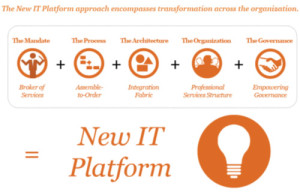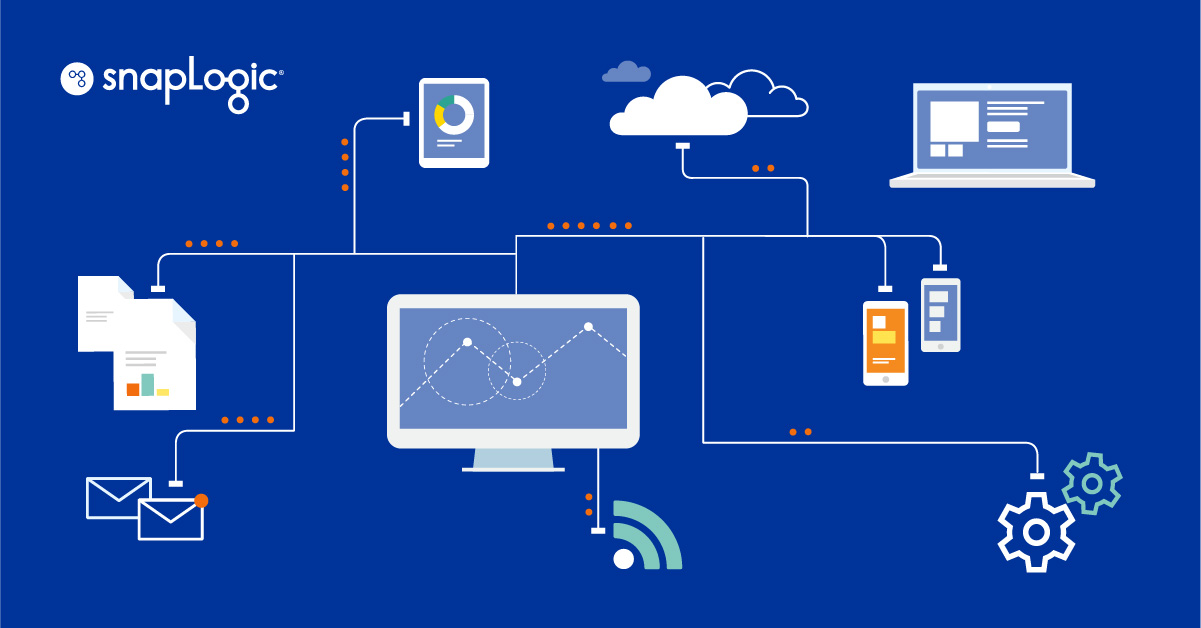Michael Pearl is an Advisory principal and Global Cloud Computing leader with PwC. We talk with him today about a new collaboration between the companies that helps organizations transform their IT and integration strategies for the digital age.
SnapLogic: Tell us about the kind of work that PwC is doing right now in the area of integration?
 Today’s organizations are no longer isolated enterprises—rather they are diverse and distributed ecosystems of employees, customers, partners and suppliers with different processes and systems. We are working with our clients to address these complex integration challenges through an Integration Fabric—which can deliver seamless, secure and flexible interoperability across a diverse and distributed ecosystem.
Today’s organizations are no longer isolated enterprises—rather they are diverse and distributed ecosystems of employees, customers, partners and suppliers with different processes and systems. We are working with our clients to address these complex integration challenges through an Integration Fabric—which can deliver seamless, secure and flexible interoperability across a diverse and distributed ecosystem.
Our Integration Fabric framework is a combination of tools, accelerators, and business transformation to help organizations create, implement and manage their Integration Fabric. Our Integration Fabric framework is a cornerstone of our New IT Platform — a strategic roadmap that helps organizations transform their IT organizations to meet the needs of the business in a digital age. An underlying principle is greater collaboration between IT and the business to harness technologies to drive business value and increase competitive advantage.
The Integration Fabric connects all applications, services, data, processes, devices and user experience within a single, dynamic web-enabled architecture. Business users can now integrate data sources and processes without custom coding those integration points—giving business users more independence with less dependence on IT.
The Integration Fabric framework includes a set of pre-approved connectors and reusable assets—available through an intuitive interface—along with how-to-guides, leading practices, and intelligent search capabilities. An organization’s ecosystem becomes a “virtual web” of linked resources—bringing together the right information, capabilities and rules at the right time.
Our ongoing research with technology providers like SnapLogic is helping us deliver these next generation integration solutions for enterprise companies.
SnapLogic: How did SnapLogic and PwC start working together? Can you give an example from current projects?
A SnapLogic investor introduced us, and after a briefing by SnapLogic, we saw an immediate opportunity to work together. SnapLogic’s platform is designed to encapsulate leading practices, which is a big part of our New IT Platform approach.
We help many large organizations improve their operations and achieve competitive advantage. Tools like SnapLogic are key enablers in those transformations. Importantly, there is no one size fits all for integration. When we kick off an engagement, we first understand the organization’s strategic business goals—and then help them design a new architecture and integration platform that can enable rapid and seamless integration with the future state architecture in mind.
 SnapLogic: What do CIOs think about this so far?
SnapLogic: What do CIOs think about this so far?
We’ve had tremendous feedback on New IT Platform and the Integration Fabric from CIOs, as it’s clear that traditional IT models need to evolve—and that integration needs are front and center. Everyone talks about the importance of agility, but integration complexities often stand in the way.
Traditional IT departments have typically used the linear “plan, build, run” approach. With connectors such as Snaps, business users can assemble the components that they need through a library of pre-approved options. Our standardized integration patterns can provide significant flexibility—while also enabling organizations to maintain control. This is an exciting prospect and CIOs are taking notice.
SnapLogic: What are some of the top challenges for companies in moving to this kind of a platform?
Moving to the New IT platform can help organizations achieve competitive advantage in a complex and competitive global market. But getting there requires a mindset shift across the enterprise.
To achieve seamless integration across the ecosystem, IT and the business need to closely collaborate, which has not always been easy. Business and IT need to work hand-in-hand so that business units don’t go around IT – and IT is viewed as a strategic partner that helps the business leverage and integrate digital technologies for competitive advantage. Circumventing IT can ultimately result in higher costs, greater security threats and less productivity.
Also, as a first step, organizations need to think about their integration goals. A holistic Integration Fabric architecture blueprint and plan can help ensure that the team looks beyond what’s required for a single project. Otherwise the effort may compound the larger enterprise integration challenge.
But it’s more than just the technology. It is also important to address the operational aspects and ensure that the right organization and controls are in place to steward the Integration Fabric and ensure that the business value is sustained over time.
SnapLogic: Is this an opportunity for today’s CIO?
Yes. Today’s organizations are no longer isolated enterprises—rather they are diverse and distributed ecosystems of employees, customers, partners and suppliers with different processes and systems. The area of integration presents an opportunity for CIOs to transform how they are viewed and the value they bring to the business. CIOs have the opportunity to play a central role in transforming the business and fostering integration across the ecosystem.






